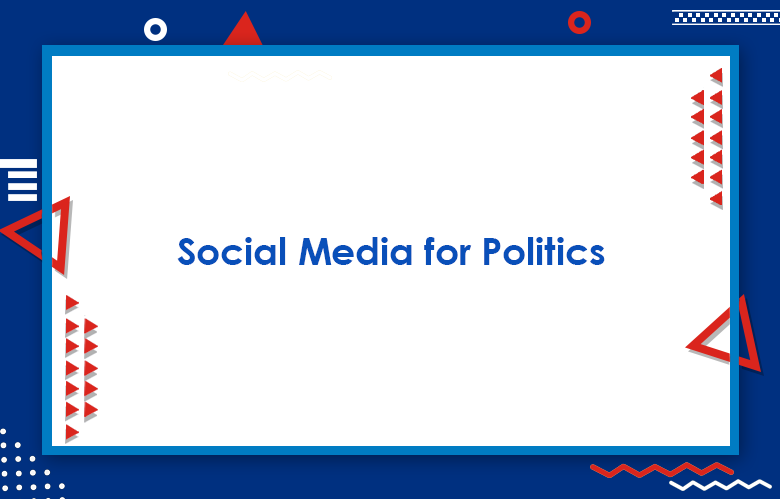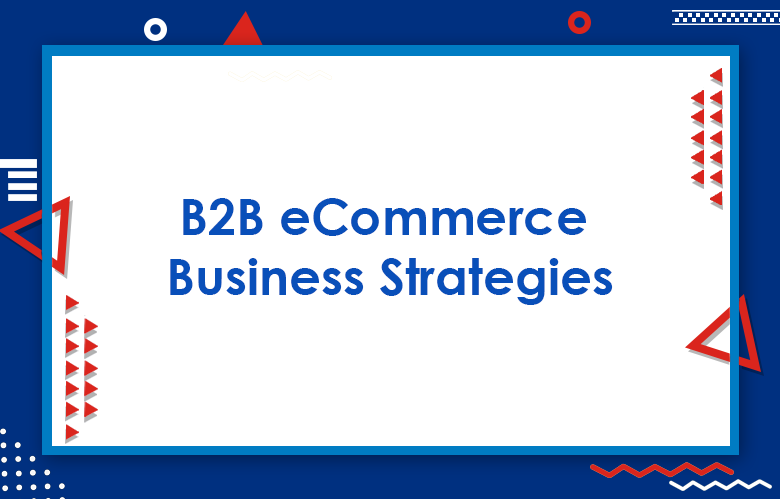Social Media for Politics: 50 Best Practices for Political Campaigns

Social Media for Politics: Politics and social media have become so inseparable that they seem made for each other. Given a thought, it appears that politics has always depended on media in one way or another. It is impossible to bring awareness without the use of media. Recent happenings, ongoing issues, voters’ concerns, constituency-related issues, candidature for election, and much more cannot be brought to public notice without media use.
Social Media for Politics
Social media has overtaken the primary print media, television, and radio. With real-time updates, reaching people through various social media handles like WhatsApp, Twitter, Facebook, Instagram, etc, is quicker and more convenient.
Social media provides a perfect platform for interaction between politicians and voters, as much of our political discourse occurs via social media. Tweets and comments represent the public forum of the modern day. However, beinger, being popular on social media and navigating between it and politics can be tricky.
Therefore, to build a prosperous political and social media campaign and reap the benefits of social media for politics, some practices should be undertaken before any political party announces participation in the election and beyond.
50 Best Practices for Social Media and Politics
Below are some simplified social media ideas for politics or some social media practices for successful political campaigns.
- Try to engage the public with video as an alternative to the traditional newscast. Social media videos empower politicians to announce news and converse with voters in real time.
- Check yourself before any updates or political news. Misformation can lead to a string of statements or comments that blemish a politician or political party’s public image. Remember that whatever one writes on social media can be stored as a record and produced as proof.
- While choosing a social media platform, do not look out and count upon the ‘younger’ or more ‘recent’ social media platforms like TikTok, Snapchat, etc. Instead, use Facebook and Twitter as the best platforms for political accounts, considering cross-posting your social comments.
- Highlight the fundraising efforts right in front and center. Platforms like Facebook represent any efforts for funding and ads. However, at the same time, look out for any spam donation messages that lead to a wrong impression.
- Learn the strategy for dealing with trolls. If you’re on social media, then trolling, harassment, spam commenting, and mass reporting are some of its consequences. Try dealing with it in a civilized manner.
- Try to understand that everybody on social media may not be interested in politics and may try to block or avoid political discussions on social media. While not taking it personally, try to attract followers and supporters, which is an uphill task, and focus on engaging with accounts and followers that are relevant or close to the target.
- The best way to create a curiosity and engagement boost-up on social media is to ask questions. To ask questions, one can use platforms like Instagram Stories, which can post the question privately and the answer publicly to the followers. One can get thoughtful responses that may serve as a future reference.
- The most shared social content is visual across social media platforms, such as infographics and videos. The benefit of posting this visual content is that the voters give it a lot of importance, and the parties can learn their worth and value amongst their followers.
- Try to find time for positive posts rather than partition posts, as many people do not want to hear about politics. Such posts will provide a much-needed break from debates and serious discussions. There should be posts regarding holiday celebrations, and local stories should be uplifted through the party affiliation for some exciting and positive vibing on social media.
- Daily presence on social media is significant for any political party as it is one of the chief political campaign strategies made for social media. The political parties can juggle upcoming events and elections, donation requests, registration updates, real-time news or announcements, and any political updates to keep themselves posted daily on social media.
- Treat the political campaign as a brand and try to understand your brand for its better image before any election participation announcement.
- Create and assemble a political and social media team. This team will help manage social media accounts, create engaging content, respond appropriately to comments, and enhance the social media following.
- It must create a political social media strategy that includes a social media calendar, finding potential influencers and partners, finding engagement goals, and planning any payable social media efforts.
- Keep verifying the political and social media accounts for authenticity to any reports of a political campaign. Also, it takes significantly less time and pays off in the long run.
- The target audience is a critical factor for any social media presence. Research and understand the target audience. These people matter the most, so understand their needs, behaviors, company on different social networks, and what is most important to them.
- Keep a strategy ready for any PR blunders. One should hope for the best while planning for the worst.
- Keep the personal account separate from the political campaign account.
- Make sure to use social media tracking tools like social media monitoring tools and social walls to keep pace with People engaging with political campaign accounts, Current trending topics essential to the political campaign, and Important political competitors. Create fruitful Posts for Social Media Political Campaign: Social media posts are everything for a social media political campaign. Pay as much attention to these posts.
- Don’t focus only on one social media channel. Find your target audience across various social networks and interact with them.
- Customize the message to reach the target audience. Make sure it relates to the audience.
- All the social media channels are different from each other. So do not post the same thing on every channel. Create separate posts for each, or choose a different posting style, even for the same content.
- While using massive visual social platforms like Instagram or Twitter, try to use more attention-grabbing or actual photos against file photos.
- Do not overlook the usefulness of video content; create a YouTube channel in addition to having social media accounts on Instagram, Twitter, and Facebook. Even though these channels make the video posts look enticing, having a YouTube channel can also help post videos from the election campaign and share important messages with the followers.
- Forums like Reddit, Medium, and other online communities are excellent for starting essential discussions, answering questions about political campaigns, getting voter feedback, and discussing topics important to the campaign.
- Make efficient use of social media content curation tools for building appropriate, valuable content for social media channels.
- Remember that it’s normal for everything not to go viral. It may be safe.
- Interact with followers, supporters, and non-supporters for their feedback, either positive or negative, and vital to them. In this way, it will show concern about their desire and needs.
- To grow the social media following, keep encouraging followers to share the content and spread the word, mainly if fundraising or other essential events exist.
- Add a social media account and email signature to the campaign website. It will create an all-comprehensive place for the political campaigns’ social media posts.
- Try social media contests as a way to increase followers. These social sharing contest scans motivate the existing followers to share the contest’s social posts on their profiles to get more views with each share.
- Collaborate and coordinate with the organizations and influencers that support the political campaign and are willing to share related posts with their own set of followers.
- Pay attention and follow the necessary compliance of various social media channels.
- Try to build trust with followers and get the support of the community.
- Try to apologize or reconcile and make the necessary corrections for any inaccuracy that occurred during social media posting. Honesty and accepting responsibility will work wonders for any political campaign’s public image.
- Train the team that manages the social media account to handle all kinds of crises by giving them appropriate tools, guidelines, and prompt commands in any national emergency.
- Ensure that the team that handles the social media maintains the consistency and regularity of the posts or messages and gets them approved before posting.
- Ensure that the team handling social media has signed an NDA so that everything remains confidential and shared proprietary information is not shared between voters and competitors on social media sites.
- Don’t expect any social media site to do the fact-checking on behalf of any political party or any politician.
- Speak the language of the social media platform that is in use. While older generations usually use Facebook, young voters use Instagram, Twitter, and Snapchat. So, each post has to be carefully created according to its language and made appealing to its users.
- Images are more influential on social media than words, as they speak volumes. Any tweet on social media with a limited number of characters can use pictures to create long-lasting impressions in the viewers’ minds.
- Big data allows campaigns to gain votes and support from the target of potential voters or donors. Social media channels use this big data to contribute to the same platform in real time.
- People are bored of hearing the same old issues presented in jargon. Try using a different language that creates a personal touch with the voters and resonates with their problems, needs, and opinions.
- Try Being a Human does not only brag about themselves but also shares images of people with their real-time stories and videos from the campaign trail and all the political events.
- Blend the posts on social media with other kinds of marketing platforms. Post or share the social media platform link or reference on TV ads, direct mail pieces, and radio commercials to get more views.
- Do not post any controversial photos or videos on social media to ruin the image of the political campaign on social media.
- Don’t ignore social media and pay attention to any latest updates relating to the political campaign.
- Don’t treat social media as a one-way try communication tool. Instead, build a two-way interactive engagement with the audience and be social.
- Please do not focus on the competitors and post anything relating to them.
- Create a clear public image on social media and maintain it diligently.
- Be dynamic but e-dynamic. Do not miss any reason to update your social media posts or tweets and celebrate every occasion.
Social media has tremendous potential to uplift anyone. To get the most out of it, one needs to tap into this power of social media to get support from the community and the followers, thereby designing a prosperous political social media campaign. Keep Posting!!



